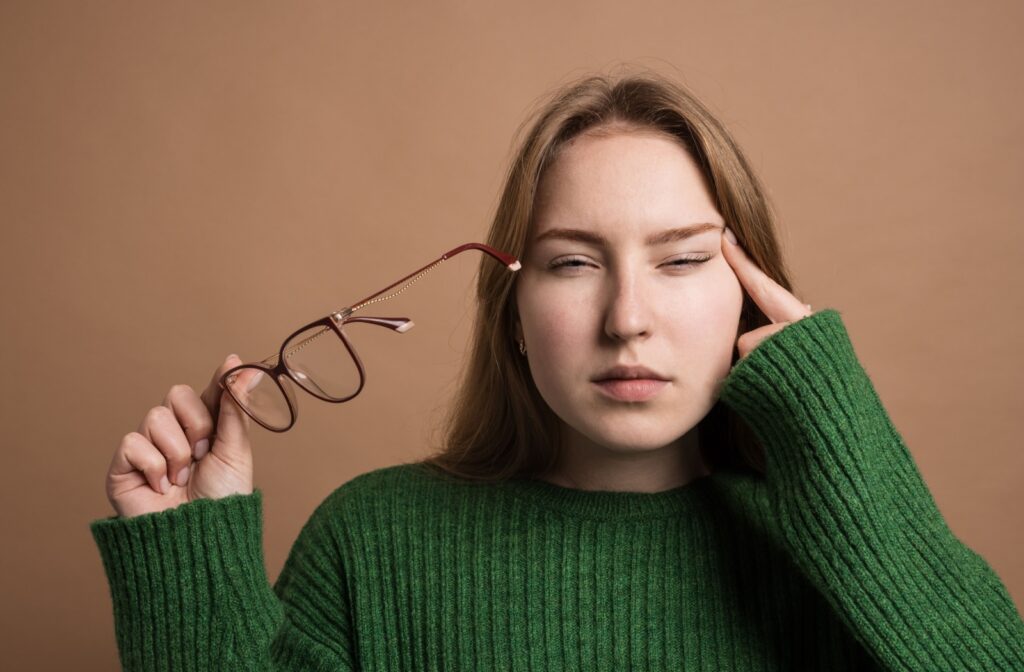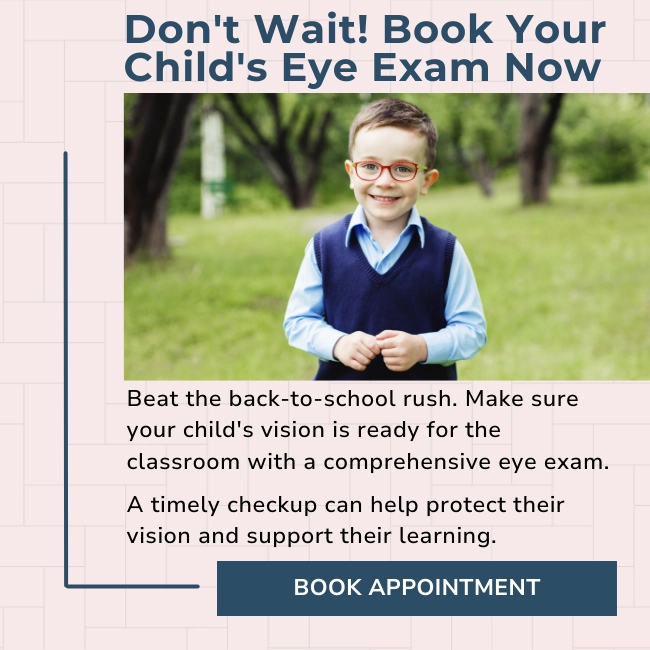Dry, scratchy eyes or foggy vision can disrupt your daily routine—whether it’s by making it harder to focus on the screen at work, enjoy a good book, or even just drive comfortably. Dryness and foggy or blurry vision are common when your eyes lack sufficient or quality tears.
On the plus side, there are effective ways to help manage these symptoms and protect your vision. Traditional treatments for dry eyes and foggy vision include eye drops and warm compresses. However, sometimes more advanced treatments, such as radiofrequency and intense pulsed light, can help with symptom relief for more moderate to severe cases of dry eye.
A dry eye consultation and comprehensive eye exam can help your eye doctor determine the underlying cause of your symptoms and recommend an appropriate treatment plan.
What Is Dry Eye?
Dry eye is a disease of the surface of the eye that happens when your eyes don’t produce enough tears or your tears evaporate too quickly to keep your eyes moist. But this doesn’t just leave you with a little discomfort—it can significantly impact your daily life.
Common symptoms of dry eyes include:
- A burning, stinging, or scratchy sensation in your eyes
- Sensitivity to light
- Redness
- Difficulty wearing contact lenses
- Blurry vision
- Excess watering
- Eye fatigue
Several factors can cause dry eyes, including the following:
- Age (your tear production naturally decreases as you get older)
- Certain medical conditions
- Medication side effects
- Prolonged screen time
- Infection or inflammation of the eyelids
- Environmental factors like wind or air conditioning
What Is Foggy Vision, & Why Does It Occur?
Foggy or blurred vision doesn’t mean complete blindness, but rather a lack of sharpness and clarity in what you see—like looking at the world through a smudged lens. You can experience blurred vision with dry eyes. When your tears don’t adequately lubricate and nourish your eyes, it disrupts your cornea’s smoothness and clarity, leading to foggy vision.
However, foggy vision can also signal other issues. Digital eye strain can cause blurry or foggy vision, particularly for people who spend extended periods of time looking at screens. It can also cause temporary blurriness, make it harder to focus, and contribute to more long-term issues such as dry eyes.
When to Seek Professional Help
If you’re unsure about your symptoms, take our dry eye quiz to determine if you may have dry eyes. But don’t stop there.
Ignoring symptoms such as dry eyes and foggy vision can lead to more severe complications, such as eye infections or even damage to the cornea (the clear front part of the eye) over time. That’s why working with your eye doctor is so important.
We’ll evaluate your condition, identify the root cause, and recommend tailored treatment options. Plus, you’ll have peace of mind knowing you’re taking care of your most essential sense—your vision!
Treatment for Dry Eyes & Foggy Vision
While over-the-counter eye drops can help treat mild cases of dry eye or provide temporary relief, they don’t target the root cause, and you may not find relief. Advanced treatments for dry eyes and foggy vision go beyond the traditional options and can help address moderate and severe dry eye symptoms for longer-term relief.
Prescription Eye Drops
These medications can help improve natural tear production and reduce inflammation.
Intense Pulsed Light Therapy
INMODE Lumecca Intense Pulse Light treatment (IPL) can treat inflammatory dry eye and dry eye caused by meibomian gland dysfunction. Meibomian glands in the eyelids produce the oil layer in tears that helps prevent tear evaporation.
When these glands become blocked, they can’t secrete oil, which affects tear quality and causes dryness. IPL reduces inflammation, clears the gland blockages caused by bacteria or debris, and helps the glands function better.
Radiofrequency
INMODE Forma-I Radiofrequency treatment (RF) is a non-invasive procedure that uses targeted energy waves to heat the meibomian glands and stimulate the production of oils in the tear film, improving overall eye moisture and reducing symptoms of dryness.
Tips to Maintain Your Eye Health and Prevent Dry Eyes
Even if you’re already undergoing treatment, there are proactive steps you can take to protect your eye health and prevent dry eye:
- Take screen breaks: Try the 20-20-20 rule—every 20 minutes, look at something 20 feet away for 20 seconds.
- Blink often: Especially when working on a computer, blinking helps keep your eyes moistened.
- Hydrate: Drink plenty of water to support tear production.
- Use a humidifier: Combat dry air if you live in a dry climate or experience harsh winters.
- Protect your eyes: Wear sunglasses with UV protection and consider wraparound styles to shield your eyes from wind.
- Regular eye exams: Even if you don’t have any symptoms, having regular eye exams can help detect potential issues early on and prevent future problems.
The Importance of Comprehensive Dry Eye Care
Taking care of your eyes is about more than just comfort—it’s about preserving your vision and enhancing your daily quality of life. You can enjoy vision clarity and comfort when you address symptoms like dry eyes and foggy vision with the right treatments and lifestyle habits.
Book an appointment with Trail Vision Care Clinic for a dry eye diagnosis and treatment plan based on your eye care needs.




